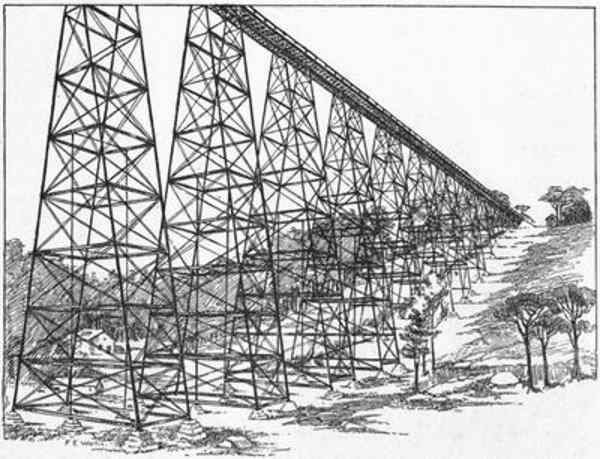Valleys and ravines are now crossed by viaducts of iron and steel, of which the Kinzua viaduct, illustrated here, is an example. A branch line from the Erie, connecting that system with valuable coal-fields, strikes the valley of the Kinzua, a small creek, about 15 miles southwest of Bradford, Pa. At the point suitable for crossing, this ravine is about half a mile wide and over 300 feet deep. At first it was proposed to run down and cross the creek at a low level by some of the devices heretofore illustrated in this article. But finally the engineering firm of Clarke, Reeves & Co. agreed to build the viaduct, shown above, for a much less sum than any other method of crossing would have cost. This viaduct was built in four months. It is 305 feet high and about 2,400 feet long. The skeleton piers were first erected by means of their own posts, and afterward the girders were placed by means of a travelling scaffold on the top, projecting over about 80 feet. No staging of any kind was used, nor even ladders, as the men climbed up the diagonal rods of the piers, as a cat will run up a tree.

61/241
[ stop the slideshow ]